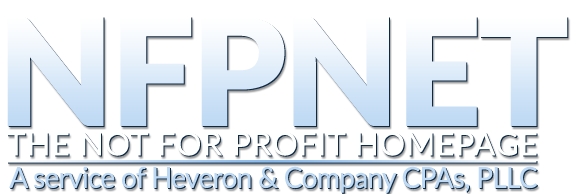Nonprofits Check Your Website … IRS Will
It wasn’t that many years ago that IRS seemed confused about what to do about nonprofit websites. Could links to for-profits be Unrelated Business Income? Can charities lobby or carry on political activity with links or messages on their website?
Now IRS considers your website and your social media postings a tool to check your activity and your compliance.
They will check these if your organization has been selected for audit. They will also check these for organizations that are applying for exempt status, or for a change in their status.
It’s very likely they will look at these if they are considering an audit of your organization based on inconsistencies identified in your form 990, or based on referrals from other agencies or from individuals.
The message is clear. Be sure your website and social media is up to date and properly describes your activities, and that those activities are consistent with your mission. Also be careful of any links or endorsements that might indicate Unrelated Business Income, political or lobbying activity.
It wasn’t that many years ago that IRS seemed confused about what to do about nonprofit websites. Could links to for-profits be Unrelated Business Income? Can charities lobby or carry on political activity with links or messages on their website?
Now IRS considers your website and your social media postings a tool to check your activity and your compliance.
They will check these if your organization has been selected for audit. They will also check these for organizations that are applying for exempt status, or for a change in their status.
It’s very likely they will look at these if they are considering an audit of your organization based on inconsistencies identified in your form 990, or based on referrals from other agencies or from individuals.
The message is clear. Be sure your website and social media is up to date and properly describes your activities, and that those activities are consistent with your mission. Also be careful of any links or endorsements that might indicate Unrelated Business Income, political or lobbying activity.
